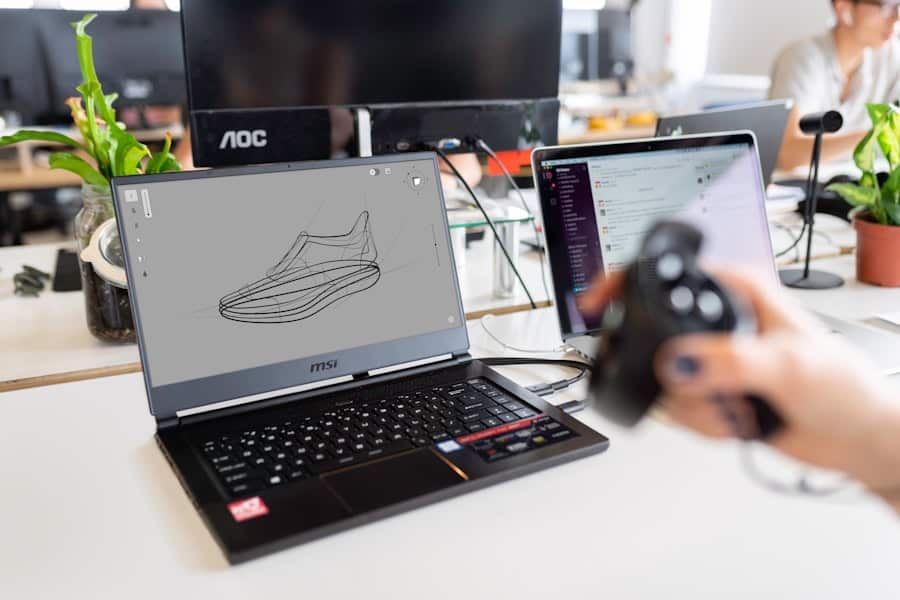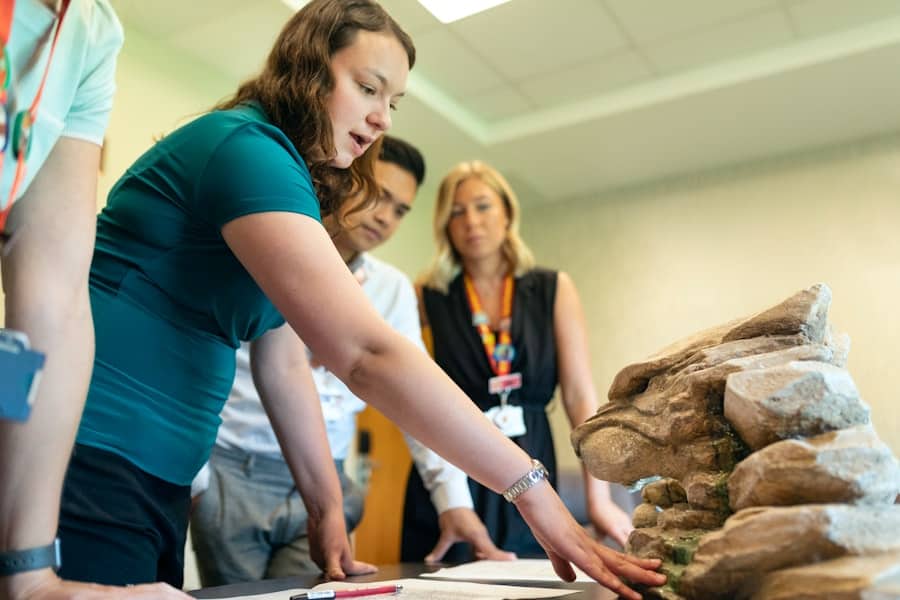The advent of technology has revolutionized the educational landscape, giving rise to virtual classrooms that transcend geographical boundaries and traditional learning environments. Virtual classrooms leverage digital platforms to create interactive and engaging learning experiences, allowing students to participate in courses from anywhere in the world. This shift has been particularly significant in the context of higher education and professional development, where the demand for tech-savvy individuals continues to grow.
As educational institutions and organizations adapt to this new paradigm, virtual classrooms have emerged as a vital component in preparing students for the complexities of modern careers, especially in technology-driven fields. In a virtual classroom, students engage with instructors and peers through various digital tools, including video conferencing, discussion forums, and collaborative software. This format not only facilitates access to a wealth of resources but also encourages diverse perspectives by bringing together individuals from different backgrounds and locations.
The flexibility of virtual learning allows students to tailor their educational experiences to fit their schedules and learning styles, making it an attractive option for many. As we delve deeper into the benefits and implications of virtual classrooms, it becomes clear that they play a crucial role in shaping the future workforce, particularly in technology-centric careers.
Key Takeaways
- Virtual classrooms offer a flexible and convenient way to access education and training in tech-driven careers.
- Virtual learning provides opportunities for hands-on experience and practical application of technological skills.
- Collaboration and communication are enhanced in virtual classrooms through the use of digital tools and platforms.
- Adaptability and problem-solving are crucial skills developed in virtual classrooms, preparing students for real-world challenges.
- Virtual learning is shaping the future of tech-driven careers by providing access to cutting-edge technology and industry-relevant skills.
The Benefits of Virtual Learning for Tech-Driven Careers
Virtual learning offers numerous advantages that are particularly beneficial for students pursuing careers in technology. One of the most significant benefits is the accessibility of high-quality educational resources. Students can access lectures, tutorials, and materials from leading experts in their fields without the constraints of physical location.
This democratization of knowledge enables learners to engage with cutting-edge content and stay abreast of industry trends, which is essential in fast-evolving tech sectors such as software development, data science, and cybersecurity. Moreover, virtual classrooms often incorporate a variety of multimedia tools that enhance the learning experience. For instance, interactive simulations, gamified learning modules, and real-time coding environments allow students to practice their skills in a safe and controlled setting.
This hands-on approach not only reinforces theoretical concepts but also builds practical competencies that are directly applicable in the workplace. As technology continues to advance at an unprecedented pace, the ability to learn and adapt through virtual platforms becomes increasingly valuable for aspiring professionals.
The Role of Virtual Classrooms in Teaching Technological Skills
Virtual classrooms serve as a dynamic environment for teaching essential technological skills that are critical for success in today’s job market. Instructors can utilize a range of digital tools to deliver content effectively, from screen sharing during live lectures to providing access to cloud-based software for collaborative projects. This exposure to various technologies not only enhances students’ technical proficiency but also familiarizes them with the tools they will encounter in their careers.
Furthermore, virtual classrooms often emphasize project-based learning, where students work on real-world problems and case studies relevant to their fields. For example, a course on web development might require students to create a fully functional website as part of their assessment. This type of experiential learning fosters a deeper understanding of the subject matter while allowing students to build a portfolio that showcases their skills to potential employers.
By integrating practical applications into the curriculum, virtual classrooms effectively bridge the gap between theory and practice, equipping students with the competencies needed for tech-driven careers.
How Virtual Classrooms Foster Collaboration and Communication Skills
Collaboration is a cornerstone of success in any tech-driven career, and virtual classrooms are uniquely positioned to cultivate these essential skills. Through group projects and discussions facilitated by digital platforms, students learn how to communicate effectively with peers from diverse backgrounds. Tools such as breakout rooms in video conferencing software enable small group interactions, allowing participants to brainstorm ideas and solve problems collaboratively.
Additionally, virtual classrooms often incorporate asynchronous communication methods, such as discussion boards and collaborative documents. These platforms encourage students to articulate their thoughts clearly and constructively critique their peers’ contributions. As they navigate these collaborative environments, learners develop not only their technical skills but also their interpersonal abilities—skills that are increasingly sought after by employers in technology sectors.
The experience gained from working in virtual teams prepares students for the realities of remote work environments, where effective communication and collaboration are paramount.
The Importance of Adaptability and Problem-Solving in Virtual Classrooms
In an ever-changing technological landscape, adaptability is a crucial skill for success in any career. Virtual classrooms inherently promote adaptability by exposing students to various learning formats and technologies. As learners engage with different platforms and tools, they become more comfortable navigating new environments and adjusting their approaches based on evolving circumstances.
This flexibility is essential in tech-driven fields where rapid advancements can render existing knowledge obsolete. Moreover, virtual classrooms often present unique challenges that require innovative problem-solving skills. For instance, students may encounter technical difficulties during live sessions or need to collaborate with peers across different time zones.
These situations compel learners to think critically and devise solutions on the fly, fostering resilience and resourcefulness. By cultivating these problem-solving abilities within a virtual context, students are better prepared to tackle complex challenges they may face in their professional lives.
Virtual Classrooms and Real-World Application of Technology
Practical Skills for the Workforce
Many programs incorporate industry-standard tools and practices into their curricula, enabling students to develop practical skills that are directly applicable in the workforce. For instance, data analytics courses may utilize software like Tableau or Python for data visualization and analysis, providing learners with valuable experience that can be applied in their future careers.
Enhancing Relevance through Partnerships
Partnerships between educational institutions and tech companies can significantly enhance the relevance of virtual classroom experiences. These collaborations can lead to guest lectures from industry professionals, internships, or project-based assignments that reflect current industry needs. Such initiatives not only enrich the learning experience but also help students build valuable networks within their chosen fields.
Bridging the Gap to Successful Careers
By bridging the gap between academic theory and practical application, virtual classrooms prepare students for successful transitions into tech-driven careers.
The Future of Virtual Learning in Tech-Driven Careers
As technology continues to evolve, so too will the landscape of virtual learning. The future promises even more innovative approaches to education that leverage advancements such as artificial intelligence (AI), augmented reality (AR), and machine learning (ML). These technologies have the potential to create highly personalized learning experiences that adapt to individual student needs and preferences.
For instance, AI-driven platforms could analyze student performance data to recommend tailored resources or learning paths that optimize skill acquisition. Moreover, as remote work becomes increasingly normalized across industries, the demand for virtual learning will likely grow. Employers are recognizing the value of candidates who have honed their skills in digital environments and can thrive in remote or hybrid work settings.
Consequently, educational institutions will need to continue evolving their virtual offerings to meet this demand while ensuring that they provide high-quality education that prepares students for the challenges of tomorrow’s workforce.
The Impact of Virtual Classrooms on Preparing Students for Tech-Driven Careers
The impact of virtual classrooms on preparing students for tech-driven careers cannot be overstated. By providing accessible resources, fostering collaboration, enhancing adaptability, and simulating real-world applications of technology, these digital learning environments equip learners with the skills necessary for success in an increasingly competitive job market. As we look toward the future, it is clear that virtual classrooms will continue to play a pivotal role in shaping the next generation of tech professionals, ensuring they are well-prepared to navigate the complexities of their chosen fields.
A related article to How Virtual Classrooms Prepare Students for Tech-Driven Careers is the review of the game-changing keyword research tool, RankAtom. This tool can be essential for students looking to enter tech-driven careers as it helps them understand the importance of keywords in digital marketing and search engine optimization. To read more about RankAtom, check out the article here.
FAQs
What are virtual classrooms?
Virtual classrooms are online learning environments that allow students and teachers to interact in real time through video conferencing, chat, and other digital tools.
How do virtual classrooms prepare students for tech-driven careers?
Virtual classrooms provide students with the opportunity to develop digital literacy, collaboration skills, and the ability to adapt to new technologies – all of which are essential for success in tech-driven careers.
What are some of the benefits of virtual classrooms for students pursuing tech-driven careers?
Some benefits of virtual classrooms for students pursuing tech-driven careers include access to a wide range of digital tools and resources, the ability to collaborate with peers from diverse backgrounds, and the opportunity to develop self-directed learning skills.
What types of technology are commonly used in virtual classrooms?
Commonly used technologies in virtual classrooms include video conferencing platforms, learning management systems, interactive whiteboards, and various educational apps and software.
How do virtual classrooms support the development of technical skills in students?
Virtual classrooms often provide hands-on experience with technology, such as coding platforms, design software, and virtual simulations, which can help students develop the technical skills needed for tech-driven careers.



